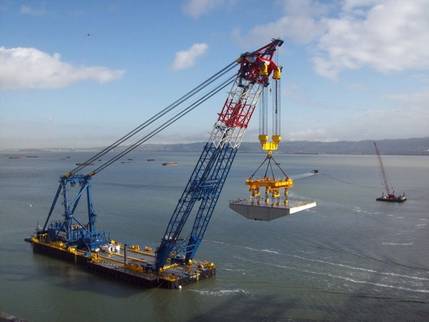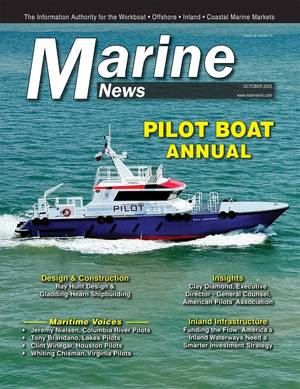Opinion: A Smarter Path to Maritime Strength
Empowering Small and Medium Shipyards Through Strategic Reform
As the United States faces mounting global maritime challenges, from contested sea lanes to aging fleets, the need to expand and modernize our shipbuilding industrial base has never been more urgent. Yet the path forward must be more than a call for capacity. It must be a call for smarter capacity. That means a more distributed, resilient, and inclusive strategy; one that fully leverages the capabilities of small and medium-sized shipyards across the country.
These yards are not fringe players. They are the backbone of regional economies, the training grounds for skilled labor, and the engines of innovation for next-generation vessel construction.
But without a clear demand signal, proper support, and deliberate policy framework to onboard these yards, we’ll be set up for failure.
In the past, when smaller, competent yards were awarded large government programs, they struggled under the weight of scaling too quickly without adequate support, resulting in delays, cost overruns, and reputational damage. This isn’t just a setback for the shipbuilder, but for the broader effort to diversify shipbuilding.
The lesson, however, is not that small yards can’t deliver. It’s that success requires a framework that sets them up to thrive, not stumble.
One such framework is strategic outsourcing. Large primes should be encouraged and, in some cases, incentivized to subcontract meaningful work to smaller yards. When done well, this approach spreads risk, builds regional resilience, and allows smaller yards to gain experience incrementally. It also ensures that surge demand can be met without bottlenecks. Congressional appropriations language already points in this direction, calling for outsourcing of ship modules like hull sections, steel fabrication, and outfitting packages with real tonnage and labor hours, not just cosmetic work.
It’s time to make this a standard practice across Navy and Coast Guard programs. But outsourcing alone isn’t enough. We must also rethink how we manage shipbuilding programs.
Program governance must evolve if we expect different outcomes. The Vessel Construction Manager (VCM) model offers a compelling alternative. Used successfully in the Maritime Administration’s National Security Multi-Mission Vessel (NSMV) program, the VCM model leverages commercial design standards and fixed-price contracting, dramatically reducing bureaucratic overhead and accelerating delivery timelines.
The NSMV program achieved per-ship costs of approximately $300 million – less than half the estimated cost had traditional government procurement and management processes been used for comparable tonnage vessels. This success was not accidental. It was the result of a strong vessel construction manager, a production-ready design and a tightly controlled change-order budget. These principles are scalable and should be applied to other vessel classes, especially where commercial standards are more appropriate. The FY26 NDAA rightly directs the Navy to explore broader application of the VCM model.
For small and medium-sized yards, VCM offers a pathway into federal programs. It removes much of the administrative burden that deters participation while allowing them to focus on what they do best, building ships. It can also create a stable pipeline of module work that supports workforce development. Apprenticeship programs thrive on predictable schedules. So do investments in facilities and infrastructure. When contracts are structured with distributed production in mind, capital flows where it’s needed and stays productive between government orders with commercial backfill.
This is not about punishing large primes or romanticizing small yards. It’s about building a team that can deliver ships on cost and on schedule in a world where time is an operational variable. A broader base of competent yards means faster recovery from shocks, true surge capacity, and fewer brittle single points of failure. It means better-paying jobs and more communities invested in the maritime mission. And it means better value for the taxpayer.
This is not just an industrial policy issue; it’s a national security imperative. President Trump has rightly called for rebuilding the maritime industrial base. Small and medium-sized yards are ready to be a part of the solution and answer that call.
Small and medium-sized shipyards offer geographic diversity, workforce depth, and a culture of problem-solving. What they need is a clear pathway into federal programs that sets them up to succeed. With the proper policy and support, these yards can transform our shipbuilding landscape and ensure that America’s maritime future is not only stronger, but smarter.
Smarter capacity, grounded in strategic outsourcing, disciplined program management, and an on ramp for the yards that want to build, offers a practical, proven path forward.
Let’s take it.














